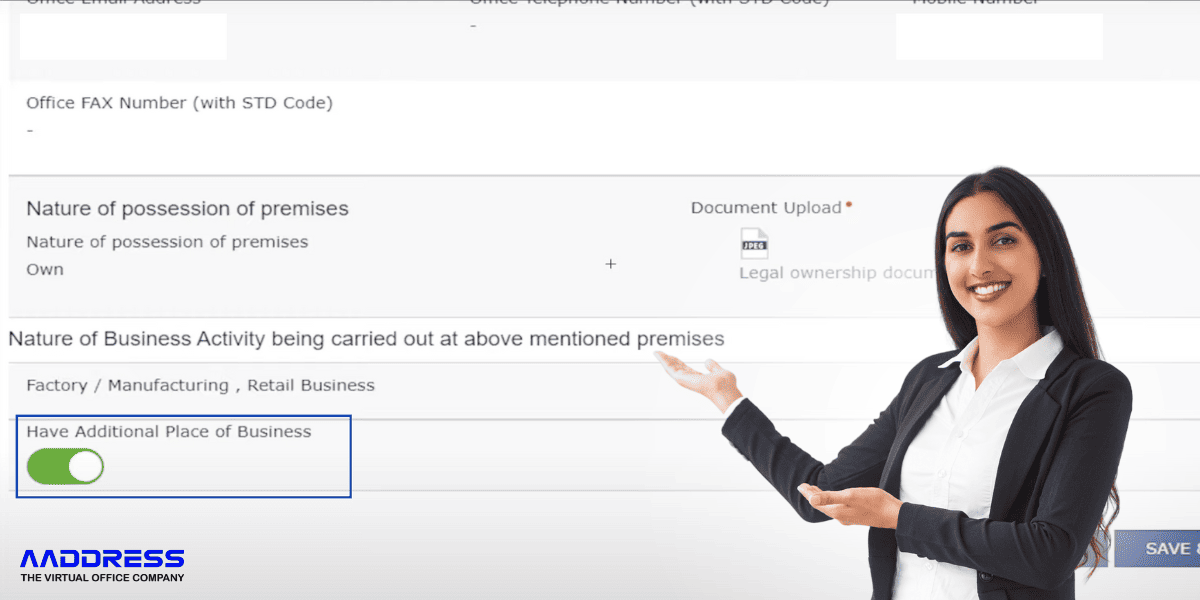Don’t just get a virtual office—let us help you build your business with our expert resources.Learn More
Building a Customer-Centric Culture: Key Strategies for Business Success

Highlights:
-
- Customer-centric businesses are 60% more profitable than non-customer-centric businesses.
- One in four customers are willing to pay up to 10% more in almost every industry if they know they'll receive excellent service.
- Customer-centricity drives numerous business benefits, such as increased sales, loyalty, satisfaction, and efficiency.
- Businesses should regularly assess customer feedback to ensure they meet or surpass expectations.
Introduction
In today's competitive business landscape, one of the most significant factors that can set a company apart from its competitors is its ability to foster a customer-centric culture.
A customer-centric approach isn't just about offering excellent products or services; it's about putting the customer at the center of every decision and interaction.
This approach can lead to higher customer satisfaction, increased loyalty, and ultimately, improved business performance.
In this blog post, we'll explore what it means to build a customer-centric culture and provide actionable strategies for businesses to implement.
Understanding the Importance of a Customer-Centric Culture
Before delving into the strategies for building a customer-centric culture, it's crucial to understand why such a culture is essential for businesses today.
Enhanced Customer Experience:
A customer-centric culture prioritizes the needs and preferences of customers, leading to a more positive and satisfying experience for them at every touchpoint.
Increased Customer Loyalty:
When customers feel valued and understood, they are more likely to remain loyal to a brand, resulting in higher retention rates and lifetime value.
Competitive Advantage:
In a crowded marketplace, businesses that prioritize customer satisfaction and engagement gain a significant competitive edge over those that don't.
Improved Reputation:
Positive customer experiences lead to word-of-mouth referrals and positive reviews, which can enhance a company's reputation and attract new customers.
Check Out this complete guide on Importance of a Customer-Centric Culture
Strategies for Building a Customer-Centric Culture
Now that we've established the importance of a customer-centric culture let's explore some actionable strategies that businesses can implement to cultivate such a culture:
1. Leadership Buy-In and Commitment
Building a customer-centric culture starts at the top. Company leaders must demonstrate a genuine commitment to prioritizing customer needs and fostering a customer-centric mindset throughout the organization. This involves:
-Setting the Tone:
Leaders should communicate the importance of customer-centricity through their words and actions, emphasizing their role in achieving long-term success.
-Allocating Resources:
Invest in initiatives that directly impact the customer experience, such as customer service training, technology upgrades, and gathering customer feedback.
-Leading by Example:
Leaders should embody the values of customer-centricity in their interactions with employees and customers alike, serving as role models for the rest of the organization.
2. Employee Empowerment and Engagement
Employees play a crucial role in delivering exceptional customer experiences. Empower and engage your employees by:
-Providing Training:
Offer comprehensive training programs that equip employees with the skills and knowledge they need to understand and meet customer needs effectively.
-Encouraging Feedback:
Create channels for employees to provide feedback on customer experiences, and actively listen to their suggestions for improvement.
-Recognizing and Rewarding:
Acknowledge and reward employees who demonstrate exceptional customer-centric behaviors, fostering a culture of recognition and appreciation.
3. Customer-Centric Processes and Systems
Examine and optimize your business processes and systems to ensure they align with the goal of delivering exceptional customer experiences. This may involve:
-Streamlining Processes:
Identify and eliminate any bottlenecks or inefficiencies that may hinder the delivery of prompt and personalized service to customers.
-Investing in Technology:
Implement customer relationship management (CRM) systems, data analytics tools, and other technologies that enable a deeper understanding of customer preferences and behavior.
-Personalizing Interactions:
Leverage data insights to personalize interactions with customers, providing tailored recommendations and solutions that address their specific needs and preferences.
4. Continuous Feedback and Improvement
Regularly solicit feedback from customers and use it to drive continuous improvement efforts across the organization. This includes:
-Gathering Customer Feedback:
Utilize surveys, feedback forms, social media listening, and other channels to collect insights into customer satisfaction levels and areas for improvement.
-Analyzing Feedback:
Analyze customer feedback systematically to identify recurring themes, pain points, and opportunities for enhancement.
-Implementing Changes:
Actively respond to customer feedback by making necessary changes to products, services, and processes, demonstrating a commitment to addressing customer concerns and improving the overall experience.
5. Measuring and Monitoring Success
Establish key performance indicators (KPIs) to measure the effectiveness of your customer-centric initiatives and track progress over time. This may include metrics such as:
-Customer Satisfaction Scores (CSAT):
Measure overall satisfaction levels through surveys or ratings provided by customers.
-Net Promoter Score (NPS):
Assess customers' likelihood to recommend your business to others, indicating their level of loyalty and advocacy.
-Customer Retention Rate:
Monitor the percentage of customers who continue to do business with your company over time, reflecting the success of your efforts in building loyalty and trust.
Click below to know more about Strategies for Building a Customer-Centric Culture Visit the link
Conclusion
Building a customer-centric culture is not a one-time initiative but an ongoing commitment that requires dedication, investment, and continuous improvement.
By prioritizing the needs and preferences of customers at every level of the organization, businesses can create meaningful and lasting relationships that drive long-term success.
By implementing the strategies outlined in this post, companies can cultivate a culture where customer satisfaction and loyalty are at the forefront of everything they do, ultimately leading to improved business performance and competitive advantage in the marketplace.
Subscribe To Our Newsletter
Conquer your day with daily search marketing news.
Most popular Blogs
Top 5 Locations in Delhi to Set Up Your Virtual Office
When you start a business in Delhi, there's always that one uncle or friend who...
Read Full ArticleReading Time: 5 min.How to Start Water Bottle Business in India: A Practical Guide
Starting a water bottle business in India can be a smart and rewarding move. ...
Read Full ArticleReading Time: 4 min.How to Add Additional Place of Business in GST Online (2025 Guide)
Adding an additional place of business in GST is mandatory for each business if they...
Read Full ArticleReading Time: .Low-Cost Business Ideas with High Profit
Introduction Starting your own business is becoming a popular choice for many people today....
Read Full ArticleReading Time: .



